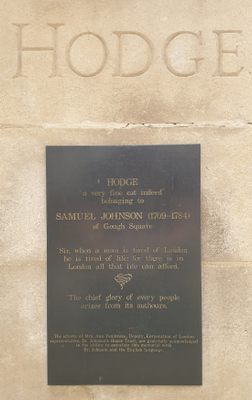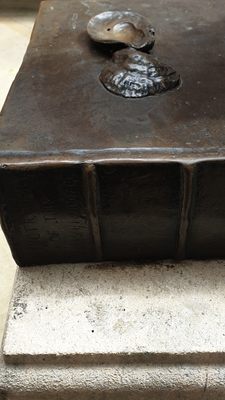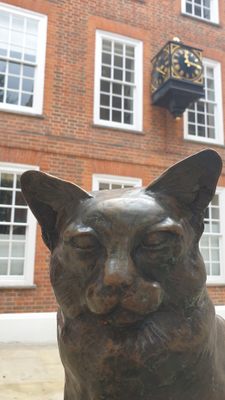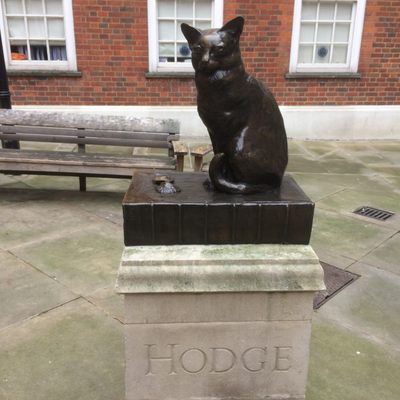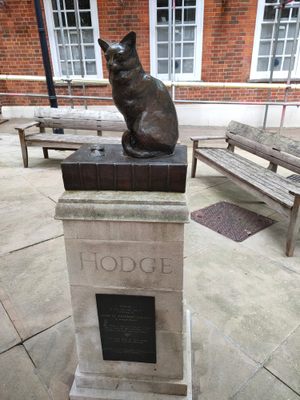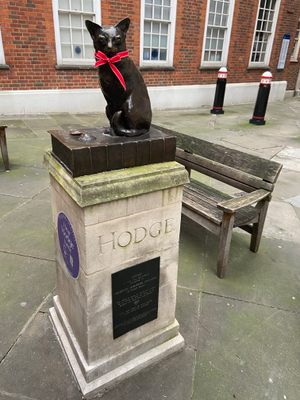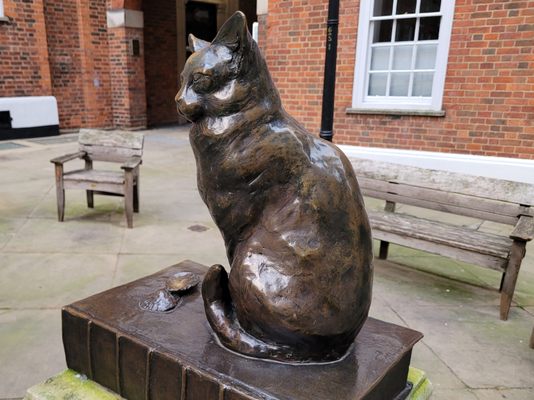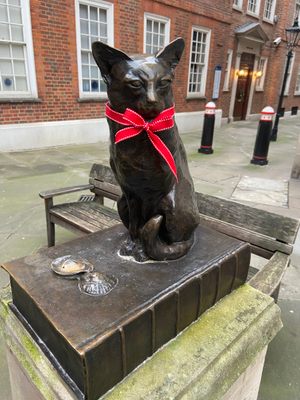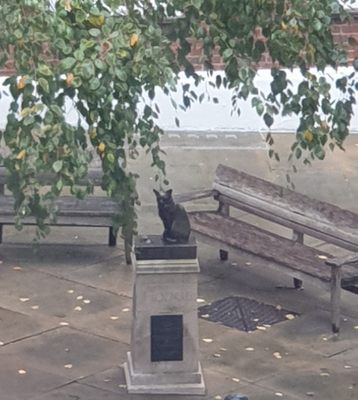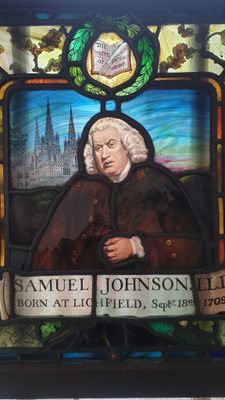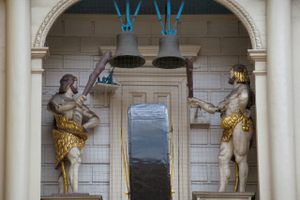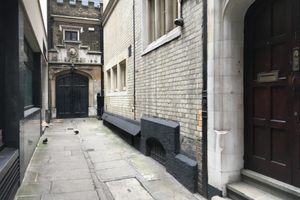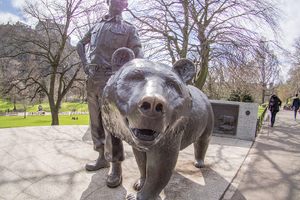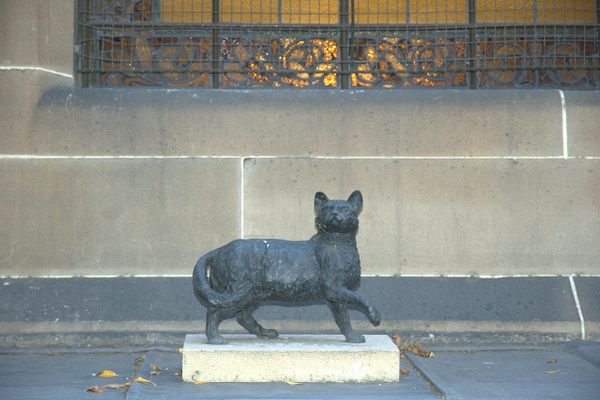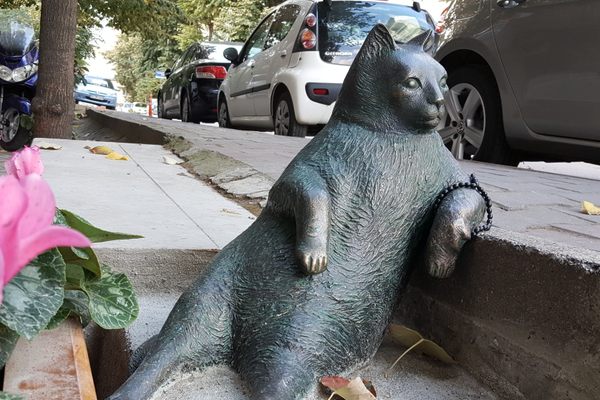About
“I never shall forget the indulgence with which he treated Hodge, his cat... I recollect him one day scrambling up Dr. Johnson's breast, apparently with much satisfaction, while my friend smiling and half-whistling, rubbed down his back, and pulled him by the tail; and when I observed he was a fine cat, saying, 'Why yes, Sir, but I have had cats whom I liked better than this;' and then as if perceiving Hodge to be out of countenance, adding, 'but he is a very fine cat, a very fine cat indeed.'” -James Boswell, The Life of Samuel Johnson 1799
Hodge was a black cat belonging to the English lexicographer Samuel Johnson of whom the writer was particularly fond. He was known to go out of his way to purchase oysters to feed the cat, even to the point of annoying his servants by his pampering of his pets.
After Hodge's death, the poet Percival Stockdale wrote "An Elegy on the Death of Dr Johnson's Favourite Cat":
“Who, by his master when caressed / Warmly his gratitude expressed; / And never failed his thanks to purr / Whene'er he stroked his sable fur.”
The bronze statue to Hodge by sculptor Jon Bickley was installed in 1997 by the Lord Mayor of London, Sir Roger Cook, outside Johnson’s house at Number 17 Gough Square where he lived from 1748 to 1759, now a museum dedicated to the writer's life. Hodge is shown sitting on top of Johnson’s dictionary and next to some empty oyster shells. The monument is inscribed with the words "a very fine cat indeed."
Related Tags
Know Before You Go
Follow the signs for Dr Johnson's House at Hind Court off Fleet Street.
Community Contributors
Added By
Published
July 16, 2012



